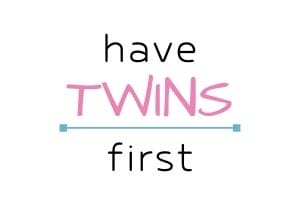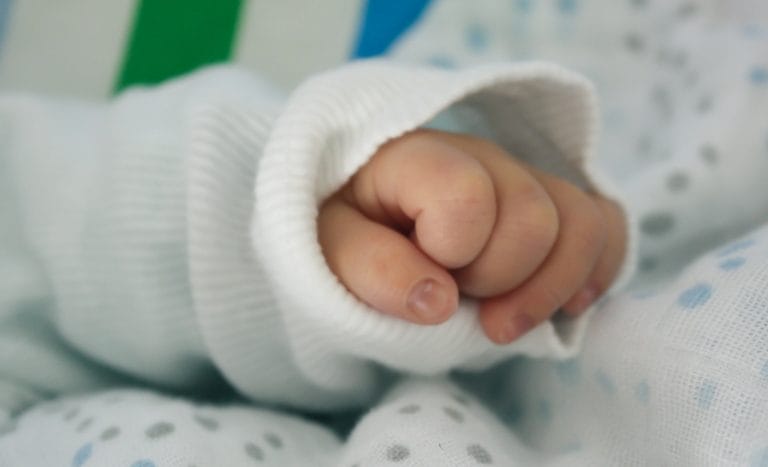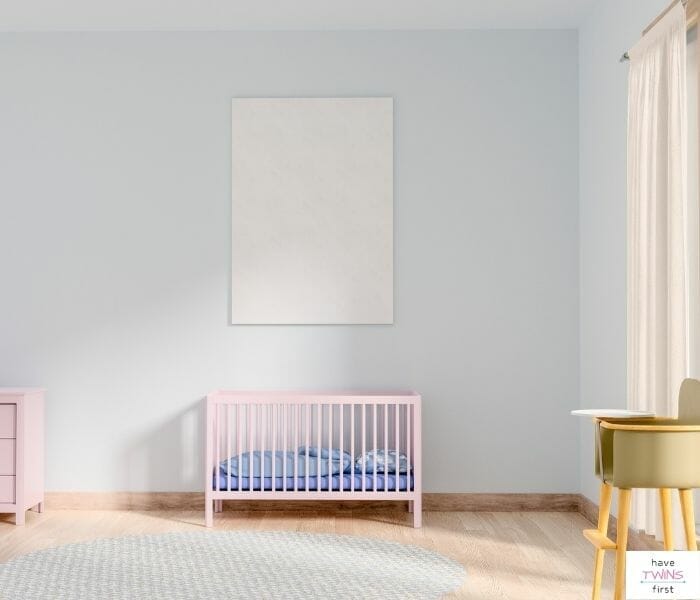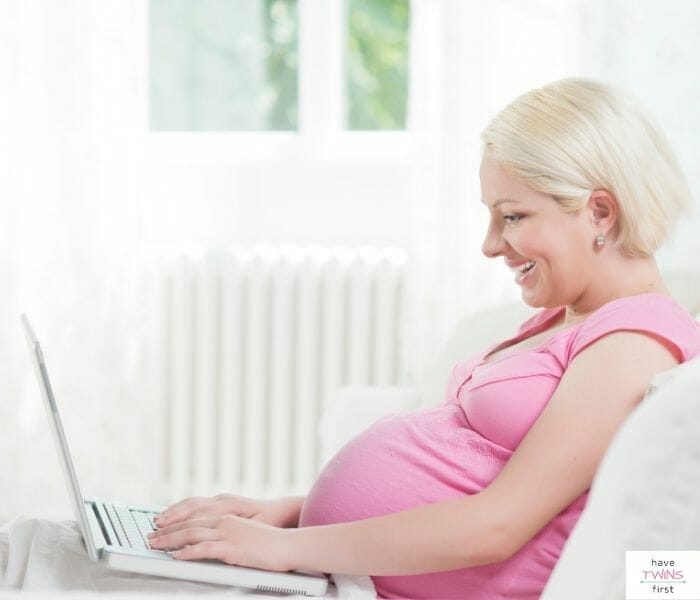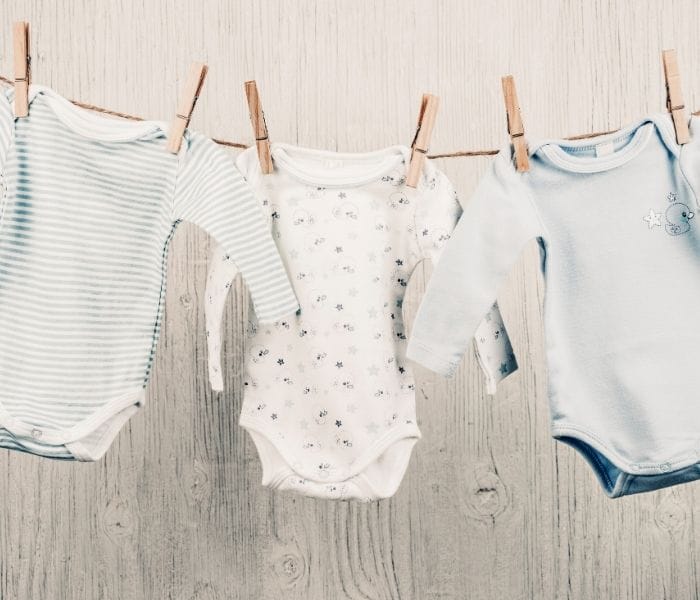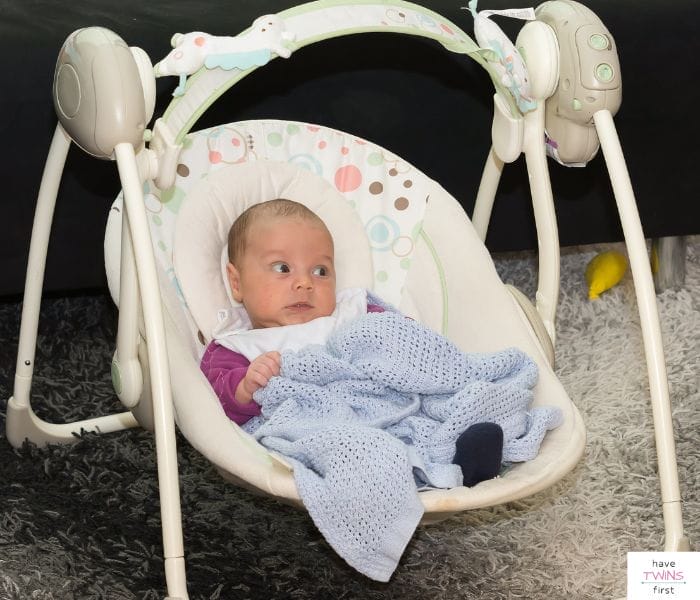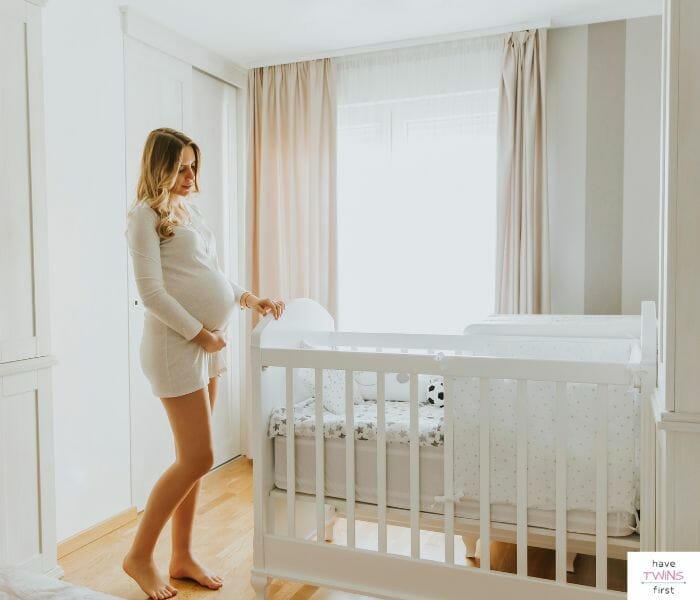Last updated: January 3, 2025
A new mom has to make a lot of decisions and that includes small decisions like choosing the right baby bottles and baby gear. A bottle is an essential baby item that you will require whether you are breastfeeding or not. But, how many baby bottles do you need?
This decision varies from case to case. The number of bottles you require depends upon the number of times your baby needs to use them. As a mom of 3 and and a twin mom, I’m going to help you decide how many baby bottles you should buy or put on your baby registry.
Please note, there are affiliate links in this post. Read my privacy & disclosure policy at the bottom of this page to learn more.
How Many Baby Bottles Do You Need for a Newborn?
Typically, newborns feed 8-12 times a day. I recommend starting with a couple different types or brands of bottles to see which one your baby prefers. The bottle box from Babylist is perfect for this!
Once you know the best bottle for your baby you can buy more according to your baby’s preference and the number of times she is eating per day. The number of bottles you require depends upon several factors like if you are exclusively breastfeeding, formula feeding, mixed feeding, or feeding multiples. So, let’s get into the details on the actual number of bottles you need, depending on the way you will feed your baby (or babies).
How Many Bottles Do You Need if Formula Feeding?
When you are formula feeding you will use a bottle each time your baby eats. Once you know the bottles your baby likes, you will require at least 8 bottles for formula feeding.
A lot of parents like to get a bottle for each feeding of the day, this way they only need to wash bottles once a day. If your newborn is eating more than 8 times a day (very likely), go ahead and get the number of bottles you need for each feed of the day.
Related: Track daily formula feedings with this printable Bottle Feeding Log
How Many Baby Bottles Do You Need for Exclusively Pumping?
If you are exclusively pumping you will require 2 bottles each time you pump. When you are done pumping you might end up combining your bottles into one.
But you will still need to clean the empty bottle. For this reason it’s best to have 16 bottles in the rotation when your baby is a newborn and you are exclusively pumping.
Related: Stay organized as a pumping mom with these Pumping Schedules & Logs
How Many Baby Bottles Do I Need if Breastfeeding?
If you are exclusively breastfeeding it is very likely you will also pump at some point. Most pumps come with a couple of bottles so you don’t need any extra bottles to start. However, as your baby grows and you store breast milk in the fridge, I recommend exclusively breastfeeding moms have at least 4 bottles.
That will give you two to pump into and two to store in the refrigerator at any given time. You might find you prefer to have 6 or 8 bottles total, so you can buy a few more if that’s the case.
Related: Get a Breastfeeding Log to track nursing sessions
How Many Bottles Does a Newborn Go Through In a Day?
A newborn baby usually eats 8-12 times a day depending upon the quantity and type of milk. Breast milk is usually very light and more digestible. So a breastfed baby will tend to eat more often when compared to a formula fed baby.
If you are breastfeeding your newborn, at first you will not use many or any bottles because you will be nursing a lot to build up your breast milk supply. For formula feeding or exclusive pumping, your newborn baby will drink about 8-10 bottles per day.
How Many Bottles Do You Need for Twins?
I am a twin mom and take it from my experience that you will need double the bottles from what was mentioned above. I recommend having 8 bottles if you are breastfeeding your twins. On the other hand, if you are formula feeding or pumping for twins you will want at least 16 bottles.
Related: Get printable Twin Feeding Logs right here to track each twin’s feeds all on the same page!
Before we move on, you might want to grab these FREE printable Pregnancy Checklists. They include a baby registry, hospital bag, and trimester checklist and you can get them by clicking the button below.
What Size Bottles Do I Need for a Newborn?
When your baby is a newborn until approximately 4 months old he or she will use the smaller size bottles (4-5 oz). As your little one grows, you might need to transition to the larger bottles (8-9 oz) because the size of feeds will increase. Just keep in mind this is true for formula feeding, but if you are feeding breastmilk from a bottle, the smaller bottles may or may not be enough for your older baby.
How Often Do Bottles Need To Be Replaced?
In general baby bottles should be replaced every 4-6 months. If you see discoloration of the bottle or if the bottle is cracked or damaged, you should replace it immediately.
You will also need to replace the nipples every month or whenever you see any damage or discoloration. If you are moving to larger baby bottles, you will end up investing in new bottles right around the time they are due for replacement.
Can Bottles Be Reused For Another Baby?
A good bottle made of BPA-free material should be reusable for another baby as long as it is not broken, damaged, or discolored. However, you will probably want to change the nipple, they are not reusable for another baby as they see a lot of wear and tear.

How To Clean Baby Bottles
It is so important to clean baby bottles properly. You should even sterilize them, especially during the first 2 months of your baby’s life to make sure that there are no germs.
A baby’s immune system is very immature. If the bottle is not cleaned properly. it can cause infection, especially diarrhea and vomiting. Here’s how to clean a baby bottle properly with a brush.
- Take all parts of the baby bottle apart. Remove the nipple from the screw cap.
- Put some dish soap in your washing container and add hot water.
- Let the bottle parts sit in the hot water to kill the germs.
- Wash your hands with a good anti-bacterial soap.
- Clean the bottle with a bottle brush. Make sure that there is no leftover milk in the bottom of the bottle.
- Clean the screw cap thoroughly including the area from where the cap screws.
- Put hot water in the teat of the nipple and squeeze it to remove the leftover milk from the hole of the teat.
- Rinse all the bottle parts thoroughly so there is no soapy liquid left.
- Let the bottle parts air dry.
Some items that I absolutely love to help with bottle cleaning include this bottle drying rack and this bottle brush. I have used both of these items for years.
I still use the drying rack to this day for drying water bottles and sippy cups, and I use the bottle brush for cleaning longer shaped glasses and water bottles. The holder that comes with the brush is also super helpful.
Related: If you prefer to use your dishwasher, you can check out this guide for cleaning baby bottles in the dishwasher.
Understanding how many baby bottles you need is dependent on the way you will be feeding your baby.
When you are nursing you need fewer bottles than a mom who is formula feeding or exclusively pumping. As a reminder you will want at least 4 bottles if you are breastfeeding, 8 bottles for formula feeding, and 16 bottles if you are exclusively pumping.
For twins, it’s 8 bottles for nursing and 16 bottles for both formula feeding and exclusively pumping. Good luck on this adventure of feeding your newborn and I hope you are able to enjoy your time as much as possible.
